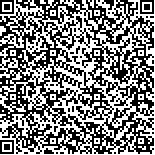|
| 引用本文: | 连玉喜,李昌,叶少文,李为,刘家寿,李钟杰.云南高原渔洞水库鱼类空间分布格局及主要影响因子.湖泊科学,2018,30(6):1755-1765. DOI:10.18307/2018.0626 |
| LIAN Yuxi,LI Chang,YE Shaowen,LI Wei,LIU Jiashou,LI Zhongjie.Fish spatial distribution patterns and controlling factors in Yudong Reservoir, Yunnan Plateau. J. Lake Sci.2018,30(6):1755-1765. DOI:10.18307/2018.0626 |
|
| |
|
|
| 本文已被:浏览 6895次 下载 3814次 |

码上扫一扫! |
|
|
| 云南高原渔洞水库鱼类空间分布格局及主要影响因子 |
|
连玉喜1,2,3, 李昌1, 叶少文1, 李为1, 刘家寿1, 李钟杰1
|
|
1.中国科学院水生生物研究所, 淡水生态与生物技术国家重点实验室, 武汉 430072;2.安庆师范大学水生生物保护与水生态修复安徽省高校工程技术研究中心, 安庆 246133;3.安庆师范大学生命科学学院, 安庆 246133
|
|
| 摘要: |
| 鱼类控藻是常用的生物控藻技术之一,其前提需明确水体中鱼类群落结构及分布特征.为科学调整渔洞水库鱼类群落结构,制定合理的生物操纵策略,2013年7月运用Simrad EY60型分裂波束回声探测仪对该水库进行了水声学探测,在结合多网目复合刺网(网目=8.5、4.0、12.5、2.0、11.0、1.6、2.5、4.8、3.1、1.0、7.5和6.0 cm)取样的基础上,研究了水库鱼类群落结构及其空间分布特征,并初步探讨了影响渔洞水库鱼类空间分布的关键因素.调查中在渔洞水库共采集到鱼类5科12种,其平均密度为638.4±310.2 ind./1000 m3.鱼类在水库中呈不均匀分布,库首、库中、库湾及库尾鱼类密度分别为521.5±371.3、561.9±189.2、653.7±323.7和1137.1±90.4 ind./1000 m3,呈逐渐增大趋势,且库尾鱼类的平均个体要大于库首、库中和库湾;在垂直方向上,97.6%的鱼类都分布在水面以下0~10 m的水层,深度超过10 m的水层,鱼类所占比例只有2.4%;0~20 m水层鱼类的平均目标强度最大(-58.6 dB),20~40 m水层鱼类平均目标强度最小(-63.9 dB).MRT预测模型表明影响鱼类空间分布的关键环境因子为水温和水深.基于渔洞水库的鱼类组成和空间分布特征,建议一方面加大鲢、鳙放养量,另一方面从所属水系引进中上层土著肉食性鱼类来调整鱼类群落结构,控制藻类生物量. |
| 关键词: 渔洞水库 水声学 生物操纵 群落结构 空间分布 环境因子 |
| DOI:10.18307/2018.0626 |
| 分类号: |
| 基金项目:公益性行业(农业)科研专项经费(201303056)、中国长江三峡集团公司科研项目(CT-12-08-01)和淡水生态与生物技术国家重点实验室项目(2011FBZ28)联合资助. |
|
| Fish spatial distribution patterns and controlling factors in Yudong Reservoir, Yunnan Plateau |
|
LIAN Yuxi1,2,3, LI Chang1, YE Shaowen1, LI Wei1, LIU Jiashou1, LI Zhongjie1
|
|
1.State Key Laboratory of Freshwater Ecology and Biotechnology, Institute of Hydrobiology, Chinese Academy of Sciences, Wuhan 430072, P. R. China;2.Research Center of Aquatic Organism Conservation and Water Ecosystem Restoration in Anhui Province, Anqing Normal University, Anqing 246133, P. R. China;3.College of Life Science, Anqing Normal University, Anqing 246133, P. R. China
|
| Abstract: |
| Understanding of fish community structure is the basis of determining appropriate strategy to control the alga bloom. To regulate fish community structure scientifically and define a rational biomanipulation strategy, hydroacoustic investigation were carried out in Yudong Reservoir with Simrad EY60 split-beam echo sounder in July of 2013, accompanied with the sampling of Nordic multi-mesh gill nets (mesh-size=8.5, 4.0, 12.5, 2.0, 11.0, 1.6, 2.5, 4.8, 3.1, 1.0, 7.5 and 6.0 cm). A total of 12 fish species were collected and the density was 638.4±310.2 ind./1000 m3. Fish distributed unevenly and its density tend to increase from dam part, middle part, tributary part to upper part of the reservoir, with density of 521.5±371.3, 561.9±189.2, 653.7±323.7, 1137.1±90.4 ind./1000 m3, respectively. Moreover, fish in the upper reservoir has a bigger size than that in other parts. The vertical distribution pattern is:97.6% fish habitat in the 0-10 m layer while there was only 2.4% fish distributed in waters deeper than 10 m, average target strength in the 0-20 m layer was highest (-58.6 dB) while the 20-40 m layer was lowest (-63.9 dB). The Multivariate regression tree model indicates that temperature and water depth have significant impact on fish density. To control the algae bloom, we suggest to enhance stocking of Silver Carp and Bighead Carp, and to introduce endemic piscivorous fishes at the same time to regulate fish community. |
| Key words: Yudong Reservoir hydroacoustics biomanipulation community structure spatial distribution environmental factors |
|
|
|
|